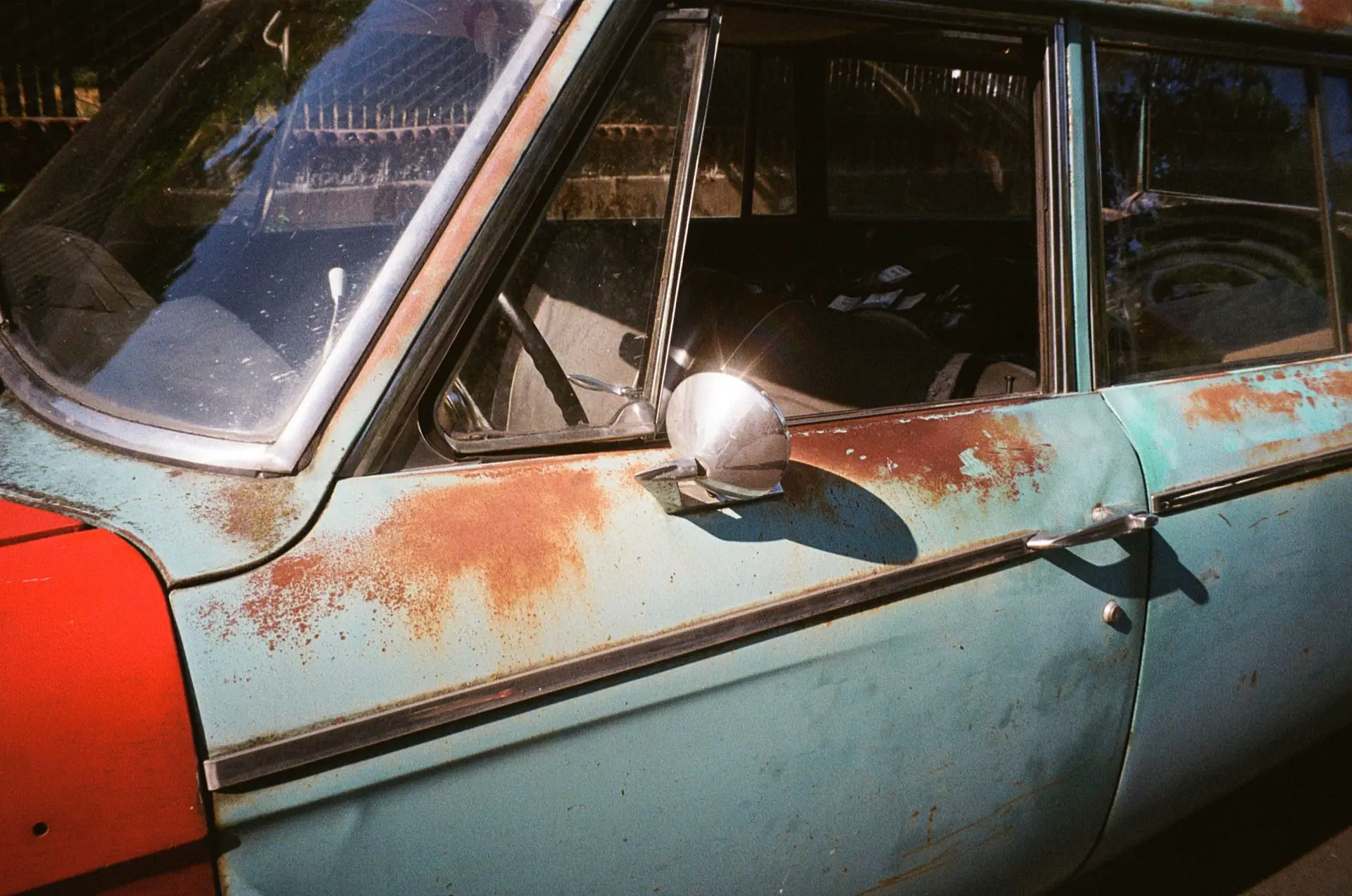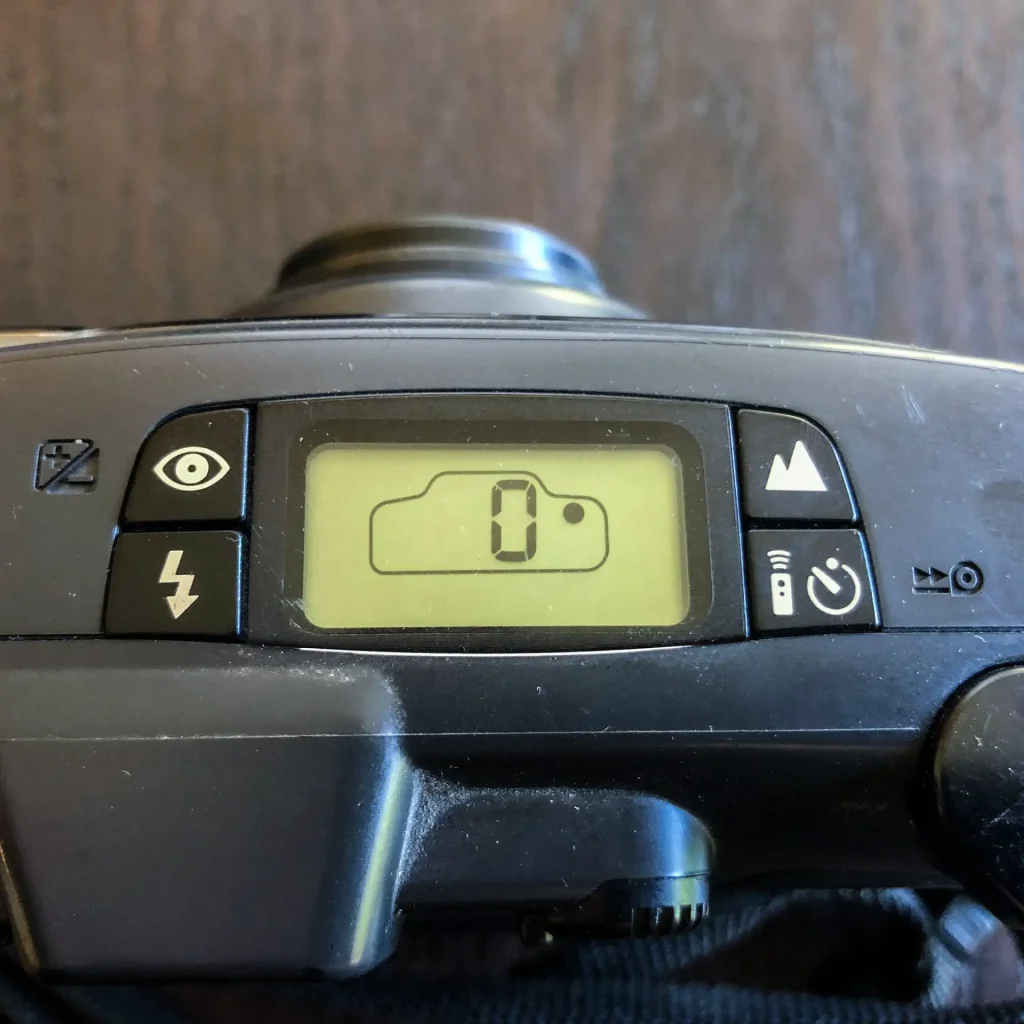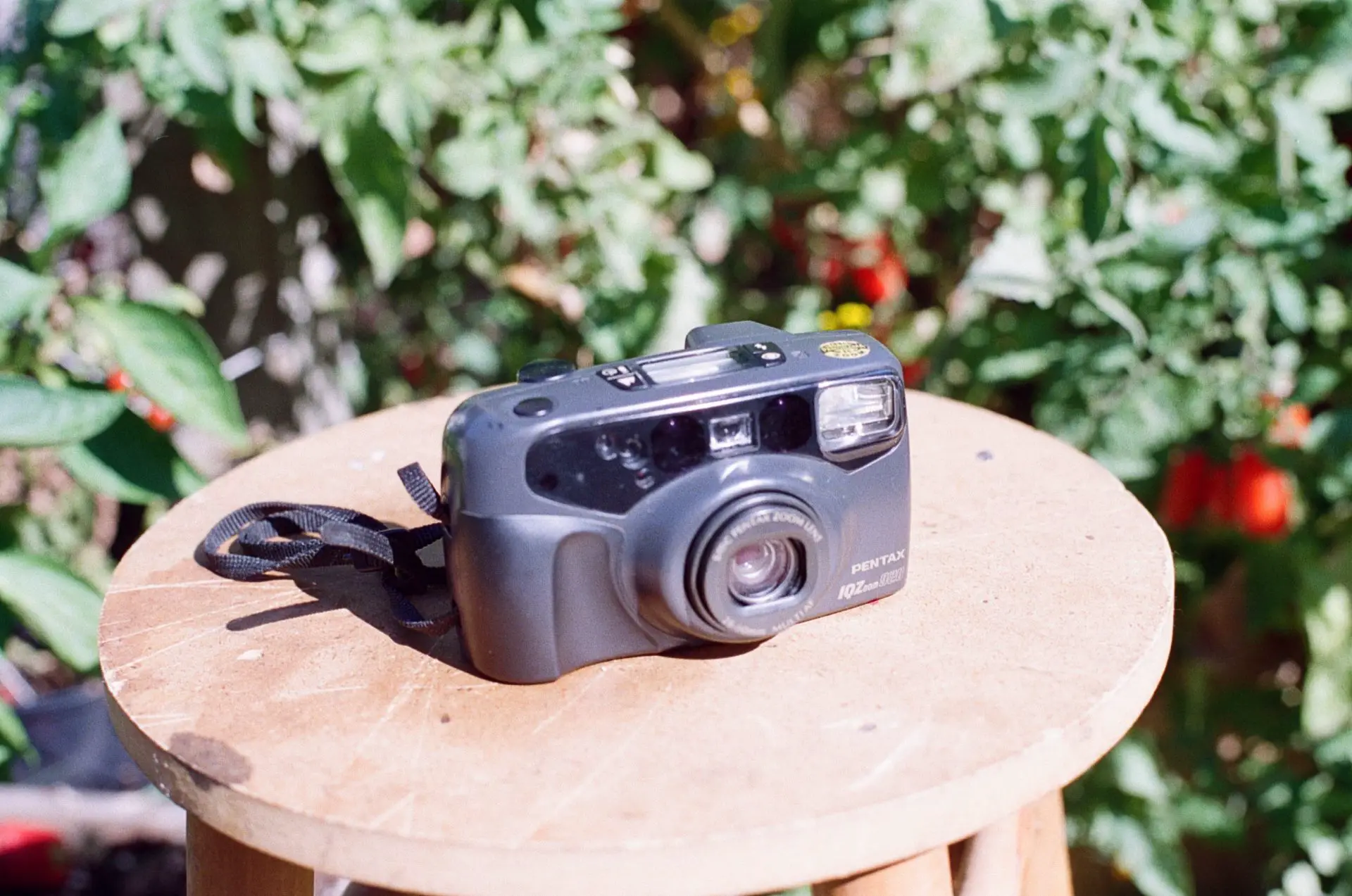When I dove back into film photography in the winter of 2020, I aimed for manual and mechanical cameras. If I was going to embrace this analog medium, I wanted the most analog experience possible. I’d tolerate a meter, but nothing more. I was definitely not interested in those compact point-and-shoot cameras that dominated film’s last decade of primacy. These were the cameras that I stared at when I was the Electronics department manager of a suburban Connecticut Kmart in the later 90s. If I couldn’t generate enthusiasm about buying one then, why would I now?
Well, as I got more into film, my hardline stances softened. I still love those older mechanical cameras like my Minolta Hi-Matic 7s, but I also pursued the electronic cameras from the 80s through early aughts. It seems like many folks seek out the advanced premium compacts, or at least autofocus machines with a prime lens. But the prices those cameras now command have steered me from that end of the pool into the deep end of compact superzooms, cameras that weren’t cool then, and aren’t cool now. Yet they are still pretty capable machines. And the best part? You can find these cameras for dirt cheap. If one turns out to be a dud, it’s no great loss. Compare that to spending a nest egg on a Olympus mju-ii and having it break within a week…

But oh man, there are a lot of these cameras out there. Every major and minor manufacturer had a line or two with a dozen to several dozen different cameras. Some of them are better than others. It’s hard to narrow it down so finding one that works for you can be a matter of chance.
I chanced upon the Pentax IQZoom/Espio series not long after getting the Hi-Matic 7s. The IQZoom/Espio series is held in some regard, but there’s about sixty different models Pentax released from the later 80s into the mid aughts. I first found a 170SL, a nice slim camera from around 2001. i enjoyed using it, but then heard about another model that interested me: The Pentax IQZoom 928, also known as the Espio 928. Released in 1994, the 928 has a maximum zoom of 90mm, pretty respectable but nothing too long. The short end is a bigger deal, as its minimum focal length is 28mm, making it a wide angle lens. I was intrigued!

There’s not too much info out there on the IQZoom 928, but I managed to find a couple contemporary magazine articles. Popular Photography wrote this 1995 article praising the IQZoom 928, and Backpacker magazine did a 1996 shootout between the IQZoom 928 and a bunch of different compacts, including favorites like the Contax TVS, Leica Mini Zoom, Yashica T4 Super, and Nikon 28Ti. It held its own in the eleven-camera competition. No one is going to mistake the 928 for any of these cult cameras, but does that matter?
Back to the camera in hand. I don’t know if anyone will consider the IQZoom 928 a “handsome” camera, it shares the bulbous yet bricklike aesthetic of many of its brethren. But what it lacks in looks it makes up in functionality. Besides the on/off switch, panorama switch, and date back, everything important is on the top. The shutter release is solid plastic, not that squishy and deteriorating rubber that some of these cameras featured. There are four mode buttons clustered around the LCD display, each button can be pressed easily with fat fingers. (No pen required.) The IQZoom 928 has a nice balance of features, between “you can turn the flash off” of the 80s compacts and the dizzying array of modes that cameras like the Samsung ECX-1 or Konica AiBORG sport.

And yes, you can turn the flash off! I can cycle through the various flash modes (including red-eye reduction) but if the subject is over 10 feet/3 metres away, I simply hit the “mountain” mode button once to engage infinity mode. One more press of the mountain button will give me the useful Spot AF, and another tap will put the 928 in “Easy Share” mode, basically the same thing as infinity mode but also locked in at 28mm. And the autofocus is disengaged, so you can take shots in rapid succession if you want. The camera will stay in this mode until you disengage or switch it off, whereas the infinity mode is a one-time setting.
But that’s not all! There are a few more tricks in the IQZoom 928’s bag, some more creative than useful:
- Bulb mode. The shutter can stay open for a full five minutes! It’s easiest to do this with the remote control. I can’t find any information on what aperture will be selected in this mode. Will it meter? Will it just open at its maximum f/3.5? Without knowing that, it’s hard to be precise on how long the shutter should be open, so I just wing it. I’ve got some decent long-exposure shots, though.
- Double exposure. Not “useful”, but fun. Want to make a double-exposure self-portrait? You can’t engage the self-timer on the first shot, but can do it on the second.
- Exposure compensation. While many compacts (if they feature it) will give you a one-off +1.5, the 928 will let you over or underexpose by three full stops (with half-stop increments.) Not only that, but the 928 will keep whatever compensation setting locked on until you either disengage it or finish the roll, whichever comes first. (Turning off the camera will not disengage it!) Since the 928 determines film speed automatically by DX coding, it’s a useful way to override that and set your own ISO!


So the Pentax IQZoom 928 is “loaded”. But what about the results? I’ve been pleasantly surprised with the photos I’ve gotten with it. The SMC lens of nine elements in seven groups performs well. It’s not a lens one will go head-over-heels for in the same way some do for those premium compacts lenses, but it is reasonably sharp. I tend to use the 928 at the wide 28mm end, which does show some vignetting in certain circumstances, which I don’t mind. I’ve used the zoom maxxed out at 90mm, long enough that it feels like a zoom, but short enough that I can get decent results handheld. (Not so with cameras with longer zooms.) The maximum aperture of f/3.5 is better than many cameras in its class, so I’ve gotten away with using ISO 200 film instead of 400. I wouldn’t call it a great low-light shooter, thankfully the built-in flash will help you when you need it.
Of course, the Pentax IQZoom 928 is not perfect, no camera is. I do wish it was smaller, small enough to easily fit in a pocket. The motor noises are louder than I want. The battery life isn’t great, thankfully it needs only one CR123A cell, a battery that is still common and not that spendy.

Despite it all, the Pentax IQZoom 928 is a camera I’ve returned to. I bought one in 2020, got rid of that, and then got another one this year. There are cameras that are better, there are cameras that are worse. The 928 has that Goldilocks “just right” blend of things that I look for in a camera like this: a rounded set of features, easy use, good photos, and cheap price. It’s become my compact superzoom of choice, at least for the moment.
If you want to try out one for yourself, the Pentax IQZoom 928 can still be found for not a lot of cash. There are several specimens on US eBay for $50 and under. I’ve managed to find my two examples for $8.50 and $12, respectively. If you have enough patience you might find one for those prices. Oh yeah, I’d immediately ditch the leatherette case if your example comes with one. The two I had were delaminating, leaving little bits of black plastic over everything.
One word of caution: I’d steer clear the IQZoom 928M. It’s a later model that has the same 28-90mm zoom range as the 928. While the 928M is more compact, it has less features and a slower lens. And be careful: Some 928s are listed on eBay as 928M, and vice versa. Carefully look at the photo in the listing, if there’s no “M” after the 928, it’s the older, more featured version.
And it comes full circle. The Pentax IQZoom 928 was the type of camera I tried to ignore at my crap retail job twenty-odd years ago. Now it’s a constant companion. If I only knew then what I know now…
Thanks for reading! -Shawn
For more photos from my Pentax IQZoom 928 check out my flickr albums here and here.
For more of me on the internet, click here.
Share this post:









Comments
Mats on Pentax IQZoom 928 Review – My Superzoom of Choice – By Shawn Granton
Comment posted: 14/10/2021
I like this camera.It's a fun camera with lots of features and a decent wide angle lens. I do wish it was a bit smaller though.
The 928M isn't half bad either. It's a different beast though. It's a lot more compact to the point where you can actually keep it in your pocket. And the lens still seems pretty good even if it's 4.8 instead of 3.5. But it lacks most(all?) of the original 928's advanced features. Still a nice camera if your looking for a responsive and pocketable camera with a decent 28mm lens (I hardly ever zoom and threat zoom compacts more or less as prime lens compacts, using the widest focal lenght 99% of the time). It also focuses down to 50cm vs the OG 928 witch think is something more like 60cm.
The Easy Pic mode (not Easy Share I belive) is actually NOT just another infinity mode, but something much cooler that I wish more cameras had. It's a kind of hyperfocal snap focus mode, more akin to the the Ricoh GR's snap focus. Samsung also had this feature in some of their zooms and I think a few other Pentax models as well. But apart from those I'm not aware of any other compacts with this feature. Great for street shooting etc.
Comment posted: 14/10/2021
Sean Benham on Pentax IQZoom 928 Review – My Superzoom of Choice – By Shawn Granton
Comment posted: 14/10/2021
Two more posts up on 35mmc – Urban Adventure League on Pentax IQZoom 928 Review – My Superzoom of Choice – By Shawn Granton
Comment posted: 22/10/2021
Pentax Espio 928 on Pentax IQZoom 928 Review – My Superzoom of Choice – By Shawn Granton
Comment posted: 20/01/2023